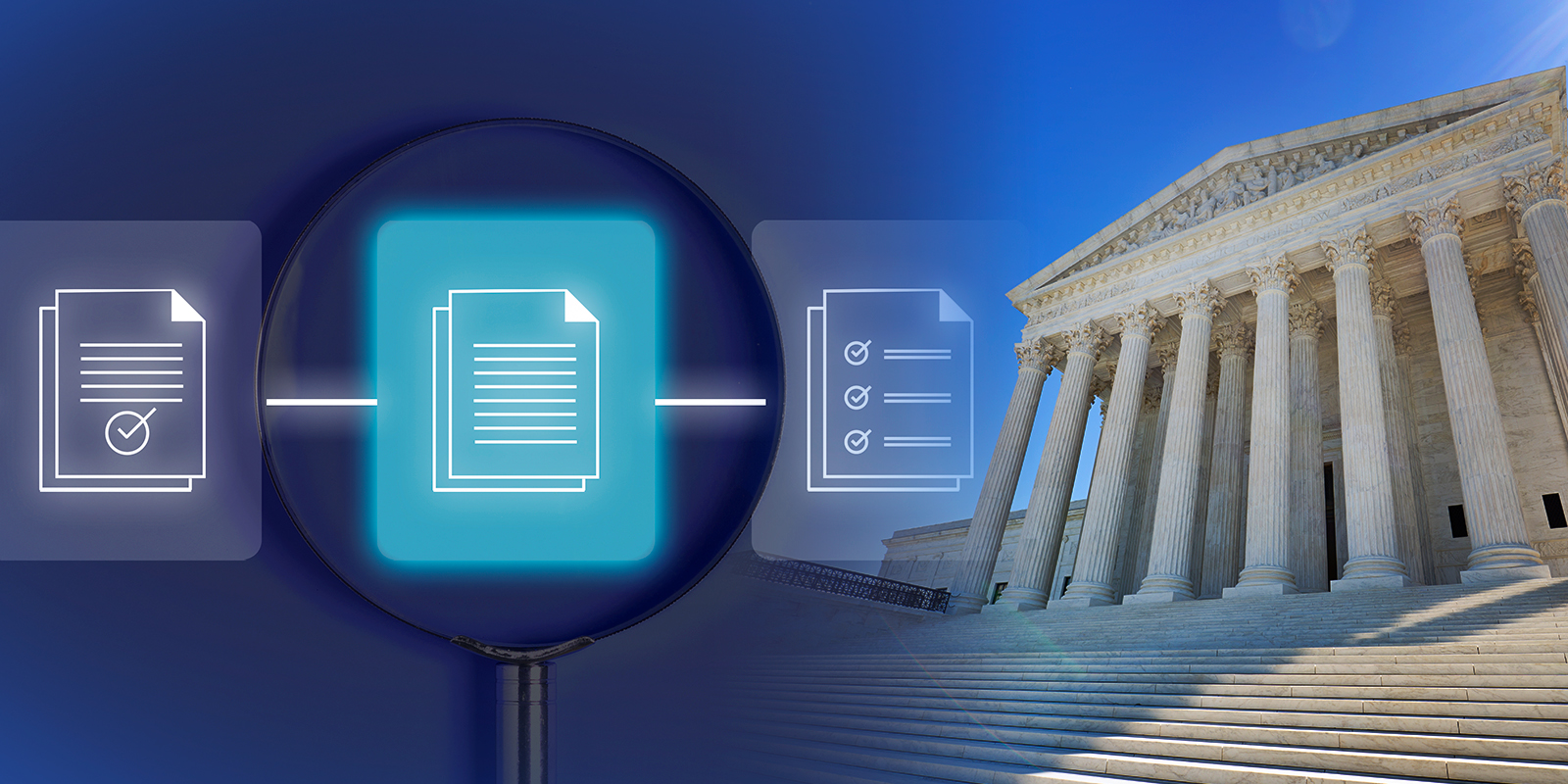
U.S. Supreme Court Encourages Federal Rule 7(a)(7) Replies—A Potential Boon for Defendants
In Short
The Development: The U.S. Supreme Court recently reminded district courts that they may use Federal Rule of Civil Procedure 7(a)(7)—a little-known rule—to screen out meritless complaints before discovery.
The Context: Rule 7(a)(7) provides the exclusive list of pleadings permissible in federal court. Rule 7(a)(7) allows plaintiffs and third parties to file complaints and answers to counterclaims and allows defendants to file answers and counterclaims. Lesser known, though, is the Rule 7(a)(7) reply—a court may order a party to "reply to an answer," either on the court's own initiative or in response to a party's motion.
Looking Ahead: Rule 7(a)(7) has been used only sporadically—and few courts use it beyond limited contexts. But just this term, the U.S. Supreme Court has seemingly breathed life into this rule—calling on litigants and courts to employ this mechanism to curb meritless lawsuits from proceeding further. This Commentary reviews Rule 7(a)(7)'s historical use and how litigants should consider Rule 7(a)(7) moving forward.
Rule 7(a)(7) Replies
If a court determines that there is a factual dispute at the motion-to-dismiss stage, defendants generally must wait until summary judgment to weed out meritless claims (or hope for at least phased discovery on the easy-to-dismiss claims). But there might be another option: Rule 7(a)(7). This rule allows courts to order a plaintiff to file a reply to a defendant's answer—a potential route to obtaining judgment on the pleadings under Rule 12(c).
If you are unfamiliar with a Rule 7(a)(7) reply, you are not alone—this procedural mechanism is rarely used, and its limited practice varies among jurisdictions.
Start with how this mechanism works in pre-trial practice. There are two main mechanisms by which a Rule 7(a)(7) reply arises:
- The federal court may sua sponte order a reply from the plaintiff when its complaint or response to a motion to dismiss lacks sufficient factual basis or legal analysis. Johnson v. Johnson, 385 F.3d 503, 529 (5th Cir. 2004).
- A defendant (or less commonly, a plaintiff) also may file a motion asking the court to order a reply under Rule 7(a)(7), which a court can grant upon a showing of "substantial need." See, e.g., Mission Appliance Corp. v. Ajax Thermostatic Controls Co., 8 F.R.D. 588, 588 (N.D. Ohio 1948). Defendants may file a Rule 7(a)(7) motion at the same time as they file a Rule 12 motion to dismiss, either as a separate motion or as an alternative request in the event the plaintiff's claims are not dismissed. Amnesty Int'l, USA v. Battle, 2007 WL 136327, at *1 (S.D. Fla. Jan. 16, 2007).
Under either mechanism, after the court orders a plaintiff to respond, the defendant can move for judgment on the pleadings under Rule 12(c) based on the information in the plaintiff's reply. See, e.g., Jones v. Dallas County, 2014 WL 1632154, at *1 (N.D. Tex. Apr. 23, 2014). This mechanism could thus be a fruitful alternative to waiting until summary judgment to resolve a legal issue that could not be resolved on the complaint alone.
As for use of this rule, despite its potential benefits to defendants (and courts), routine Rule 7(a)(7) practice remains uncommon in most jurisdictions. The exception is the Fifth Circuit, which has adopted and encouraged Rule 7(a)(7) as a tool to enforce heightened pleading standards and require responses to qualified immunity defenses. The Supreme Court has also recognized in passing the potential benefit of Rule 7(a)(7) in the qualified immunity context. See Crawford-El v. Britton, 523 U.S. 574, 598 (1998). Otherwise, however, few courts and litigants deploy this rule with any regularity.
The Supreme Court's Recent Decision in Cunningham v. Cornell University
On April 17, 2025, the Supreme Court reminded lower courts of the potential use of Rule 7(a)(7) in Cunningham v. Cornell University. The Court there held that plaintiffs alleging a breach of fiduciary duty under the Employee Retirement Income Security Act of 1974 need not plead that a certain transaction fell outside of a statutory exception, as those exceptions provide affirmative defenses, which defendants must raise in their answers. Acknowledging the "serious concern" that this conclusion could enable plaintiffs to "too easily get past the motion-to-dismiss stage and subject defendants to costly and time-intensive discovery" over whether the exemption applied, the Court reminded district courts that they can use "existing tools at their disposal to screen out meritless claims before discovery." If a defendant's answer asserts that a statutory exception applies, the court could invoke Rule 7 to require the plaintiff to show that it does not and "dismiss the suits of those plaintiffs who cannot plausibly do so."
In a concurring opinion, Justice Alito (joined by Justices Thomas and Kavanaugh) agreed that "[p]erhaps the most promising" potential safeguard against potential windfalls in meritless litigation was that "a district court may insist that a plaintiff file a reply to an answer" to a party's affirmative defenses under Rule 7(a)(7). Although he observed that "[i]t does not appear that this is a commonly used procedure," he urged that "[d]istrict courts should strongly consider utilizing this option … to achieve 'the prompt disposition of insubstantial claims.'"
The upshot from this decision and concurring opinion is that litigants and courts should explore the use of Rule 7(a)(7) replies as a potential mechanism for curbing meritless lawsuits that might otherwise move past a motion to dismiss.
The Potential Uses of Rule 7(a)(7)
With the U.S. Supreme Court now calling attention to Rule 7(a)(7) replies, litigants would benefit from considering instances where this tactic could prove beneficial. The likely opportunities for benefitting from this rule will arise in instances where there is a key fact that is known to be dispositive but the plaintiff pleaded around it—thus precluding a successful motion to dismiss. Immunity and statute-of-limitations defenses might also prove worthwhile in this posture. Other instances might arise if the relevant statutory scheme sets up affirmative defenses or safe harbors (like the ERISA provisions in Cunningham or in statutes like the Telephone Consumer Protection Act, to name just a few examples).




